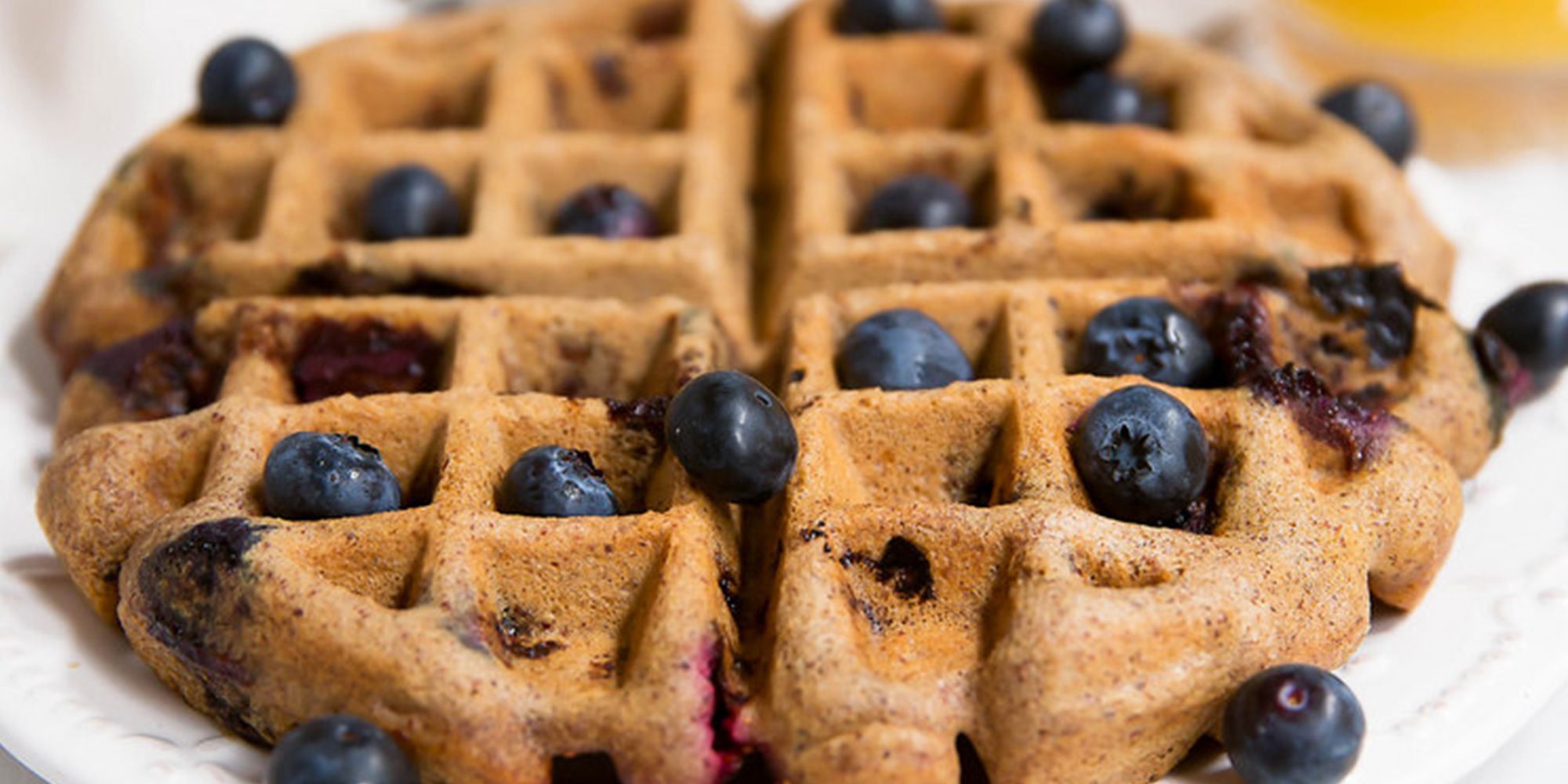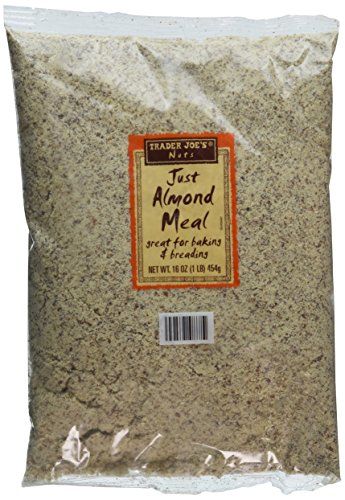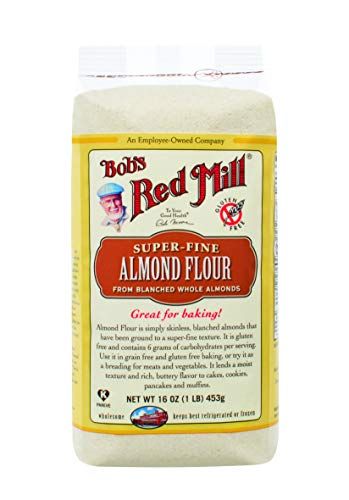Home » Diet & Food »
Almond Meal And Almond Flour Are Not The Same Thing, Just FYI
Almond-based everything—from almond milk to almond flour and almond meal—is seriously coming after wheat and dairy’s primo positions in the grocery store aisles.
Once reserved for the bougie organic section (or joints like Whole Foods), almond products have truly gone mainstream, thanks to their incredible versatility and nutritious profile. (Okay, eating trends like gluten-free, vegan, paleo, keto, low-carb and dairy-free, certainly aren’t hurting, either.)
The influx of almond products—especially in the baking aisle—though, might leave you with some questions, like: What the heck is the difference between almond flour vs. almond meal? And can you use the two interchangeably?
Getting creative with ingredients like almond flour and almond meal in the kitchen can do wonders for your health (research published in the Journal of Agricultural and Food Chemistry suggests almonds’ unique combination of vitamins, minerals, and phytonutrients can help reduce risk of diabetes and cardiovascular disease), but only if your creations are actually delicious enough to eat.
Keep your taste buds and your wallet (this stuff ain’t cheap) happy, and keep the following differences between almond flour vs. almond meal in mind during your next kitchen experiment.
What is almond flour, exactly?
Almond flour is made of finely-ground, blanched almonds, which means the almonds have been boiled in order to easily remove the skin, says Rima Kleiner, RDN, dietitian and creator of Smart Mouth Nutrition.
Once boiled and skinned, the almonds are then ground in a blender or food processor until they reach an almost powdery, flour-like consistency. The result: a pale, sometimes light-yellowish flour that’s soft to the touch.
Here’s what you get in a 1/4-cup serving of almond flour, according to the USDA:
- Calories: 170
- Fat: 15 g
- Saturated fat: 1 g
- Protein: 6 g
- Carbs: 6 g
- Fiber: 2 g
- Sugar: 1 g
- Sodium: 0 mg
- Calcium: 66 mg
- Iron: 1 mg
- Potassium: 190 mg
Like whole almonds, almond flour rich in vitamin E, which has been proven to protect cells from free radical damage, help prevent blood clots from forming in arteries, and boost the immune system.
Then what is almond meal, exactly?
Almond meal differs quite drastically from almond flour in texture and appearance because it uses raw, unpeeled almonds, which are ground with their skins on, says Kleiner.
Thanks to the skins, almond meal tends to have a coarser, more crumbly texture (and dark brown and yellow specks) than almond flour.

In the nutrition department, almond flour and almond meal are basically identical, according to Cara Harbstreet, RD, dietitian and creator of Street Smart Nutrition.
“The biggest difference comes down to volume and mass,” she says. Since almond flour is more finely ground, it could contribute to a denser texture when large amounts of it are used in a recipe. Almond meal, meanwhile, has a heartier texture.
So, when should you use almond flour?
Are your baked goods ready for their close-up? Since almond flour has a more delicate texture, it’s no surprise that it’s recommended for recipes where the final appearance is of high importance, Harbstreet says. (Like cookies you’re making for your skeptical friends…)
“Since almond flour does not include the skin of the almonds, it looks more similar to wheat flour than almond meal,” Kleiner says. Worth keeping in mind if you intend on Instagramming your creation.
Thanks to its finer grain, almond flour also yields a fluffier loaf of bread than almond meal, Kleiner says. In many cookie, cake, or muffin recipes, you can sub almond flour in for wheat flour at a one-to-one ratio.
Get started with these delicious, gluten-free almond flour shortbread cookies by Food Faith Fitness.
Here’s when to opt for almond meal, instead.
Because almond meal is crumbly, it makes a great gluten-free breadcrumb for coating fish, chicken, and more, says Kleiner. (It works well in crusts, too.)
You might want to avoid using almond meal in sweeter recipes (think honey garlic or teriyaki chicken) and baking, though, since the almond skins in it can yield a slightly bitter a taste, says Harbstreet. Instead, try to use almond meal in salty and savory dishes that can mask any potential bitterness.
This almond meal-breaded roasted cauliflower from Eating Bird Food, for example, is almond meal at its finest.
When can you use almond flour and almond meal interchangeably?
If you don’t care much about the perfect appearance of your eats (or mind the flavor of almond skins), you can use either almond flour or almond meal in most recipes, especially quick breads and muffins, says Harbstreet.
Want to make your own almond flour? It’s pretty easy to DIY.
If you’re feeling creative (or just happen to have a Costco-sized bag of almonds lying around, you can also make your own almond flour at home without too much trouble.
Here’s how Harbstreet does it:
- Blanch whole almonds to make removing their skin easier.
- Allow the almonds to dry completely. (Moisture will affect the texture of your flour.)
- Place the almonds in a high-power food processor or blender (such as a Vitamix) and pulse until you reach your desired powdery consistency. (Do not leave the blades running continuously; this will eventually make almond butter.)
- Seal your flour in an airtight container and storein the fridge or freezer for up to two months. (Almonds’ fat content can make flour stored at room temperature go rancid.)
DIY-ing almond meal is even easier.
Similar rules apply to making almond meal, except you can just dump raw, unpeeled almonds in the blender or food processor and pulse, says Kleiner. (Again, be sure to stop before it becomes almond butter!)
Or, buy one of these almond flour or almond meals.
If you tend to go through a lot of almond flour or almond meal, DIY-ing your own might not be the most efficient route, says Harbstreet. Think about it: You’d be cleaning your Vitamix constantly. Instead, check out one of these dietitian-approved products.
Store-Bought Almond Flours and Almond Meals to Try
 Pamela’s Almond Flouramazon.com$42.20SHOP NOW
Pamela’s Almond Flouramazon.com$42.20SHOP NOW
 Blue Diamond Almond Flouramazon.com$11.94SHOP NOW
Blue Diamond Almond Flouramazon.com$11.94SHOP NOW
 Trader Joe’s Just Almond Mealamazon.com$12.73SHOP NOW
Trader Joe’s Just Almond Mealamazon.com$12.73SHOP NOW
 Bob’s Red Mill Super-Fine Almond Flouramazon.com$46.29SHOP NOW
Bob’s Red Mill Super-Fine Almond Flouramazon.com$46.29SHOP NOW
Whether you opt for a store-bought almond flour or almond meal, just make sure the product you choose contains only almonds.
Source: Read Full Article



